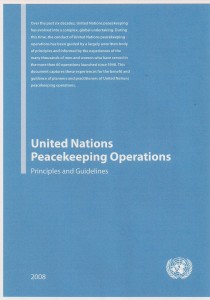
Capstone document, 53 pages, entry point for everything else.
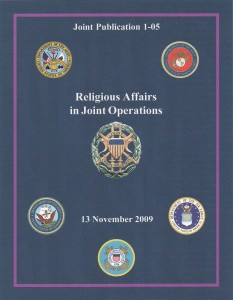
This handbook is nothing more than a Chaplain's Rice Bowl. It has nothing to do with what we were hoping for, Religious Engagement. For that, see the two references below by Capt Doug Johnston, USN (Ret), still the Top Gun on the topic. JCS needs to completely rewrite this publication, triple it in breadth and depth, and get a grip on religious engagement tactics, techniques, and procedures before, during, and after operational engagement.
Review: Religion, The Missing Dimension of Statecraft
Review: Faith-Based Diplomacy–Trumping Realpolitik
And:
Continue reading “Handbook: Religious Affairs in Joint Operations”
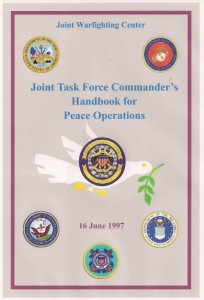
Long over-due for re-issuance, this time with a great deal more participation from all Eight Tribes, and a really warm welcome for the US Institute of Peace (USIP) which hit its stride with Guiding Principles for Stabilization and Reconstruction (Paperback). No one answers the phone when we call to ask about an update.
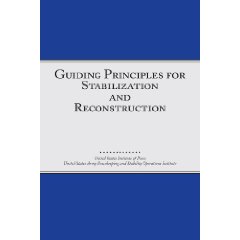
At its most fundamental this is without question the most extraordinary sensible and useful synthesis of all possible documents devoted to the subject, offering up a truly remarkable–just an amazing–framework for study and for planning.
The publisher failed to make full use of the Amazon tools for showing the Table of Contents at a minimum, and this error should be corrected immediately. Inside the Book is also recommended. I would normally reduce the book to four stars for its failure include all those outside the “traditional” national security community; for its lack of an index, and for its ignorance of most relevant books outside the narrow circle of stabilization & reconstruction groupies. However, this is such an incredibly gifted, intelligent, and meticulous presentation of vitally important information that I leave it at six star special, beyond five stars.
Still, to not be able to see in an index every page for key words like “water” or “intelligence” is infuriating.
 First, an overview of the contents, vastly more simple than the complex array of information presented in sub-sets of conditions, guidance, approach, and then elements.
First, an overview of the contents, vastly more simple than the complex array of information presented in sub-sets of conditions, guidance, approach, and then elements.
+ Introduction
+ Strategic Framework for Stabilization and Reconstruction
+ Cross-Cutting Principles
+ High-Level Trade-Offs, Gaps, and Challenges
+ Fundamentals of a Comprehensive Approach
+ End States
—Safe and Secure Environment
—Rule of Law
—Stable Governance
—Sustainable Economy
—Social Well-Being
+ Appendices
A. Resources List
B. Participants in Review Process
C. Summary of Strategic Frameworks Surveyed
D. Snapshot of COmpoments from Overarching Resources
E. Acronyms and Glossary of Selected Key Terms (incomplete, another annoyance that needs to be corrected)
Continue reading “Review: Guiding Principles for Stabilization and Reconstruction (Paperback)”
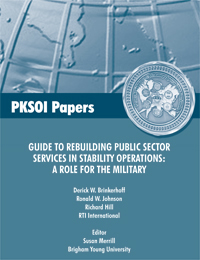
Phi Beta Iota: The US Intelligence Community (both civilian and military) still has not accepted the fact that 60% of its effort should be focused on Global Coverage (e.g. the Third World and the non-military high-level threats to humanity) and on relevant information and tailored intelligence necessary to support Stabilization & Reconstruction Operations as well as what General Al Gray, USMC (Ret), then Commandant of the Marine Corps, called “peaceful preventive measures.” See also:

|
2001 |
NATO |
Training | OSS & SACLANT | NATO OSINT Handbook |
|
2002 |
NATO |
Training | SACLANT & OSS | NATO OSINT Reader |
|
2002 |
NATO |
Training | SACLANT | NATO Intelligence Exploitation of the Internet |